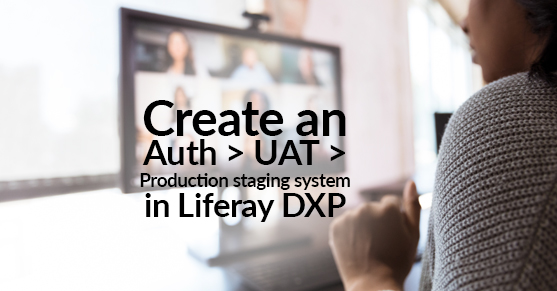Also known as “The Peter Parker principle II” or “How to create a transitive remote content promotion system”, we are going to learn how to create a real Staging > UAT > Production content publishing workflow with Liferay DXP.
One of the coolest features Liferay provides with Liferay DXP is the Content Publication Management. With this, you can remote publish content from one environment (usually, Staging or Authoring) to another (usually, Production), so the content becomes available for users while content editors work on a different Liferay installation (environment).

But what happens when you want a system with users that manage content, users that review that everything is as it should be before publishing to Production, and users that can actually publish?
Hey, you can create a really complex system with approval workflows, multiple variations, complex roles system and template publishing to your UAT or Test environment before promoting to Production! Isn’t it great that Liferay provides all those features?
Why not use another hidden feature that Liferay provides, and may be, simplify the system?
You can enable Auth to remote publish to UAT (or Test, whatever you name it), so content editors would only work on Auth. And you can publish from UAT to Production, so you make sure that someone else will review what’s prepared to go Live, before doing it, and without interfering with the content editor’s work.
This is what that system would look like:

And there is a property that allows you to do this:
staging.live.group.remote.staging.enabled=true
However, when enabling a site to act as a live site for a remote staging environment, and to act as a staging environment for another live site to achieve multiple step staging, some of the staging options are disabled, i.e. variations.
And this is where the Peter Parker principle applies! This feature may give you an increased control, but it might be at the cost of an increased complexity in the content management process. It is going to depend on your requirements, but also on how your company and the team operates, that this solution may or may not be adequate for you. To be used with caution!
If you have any questions, don’t hesitate to contact us!

